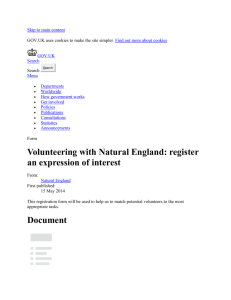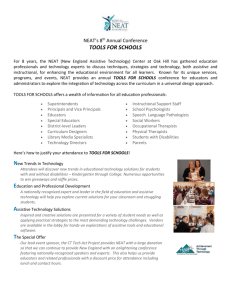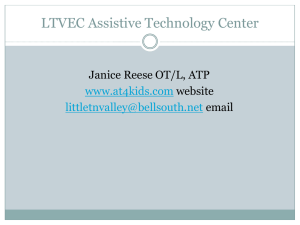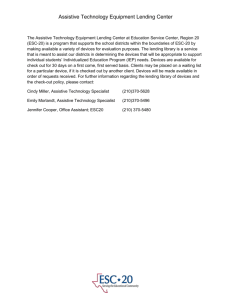University of North Carolina Wilmington Watson School of Education
advertisement
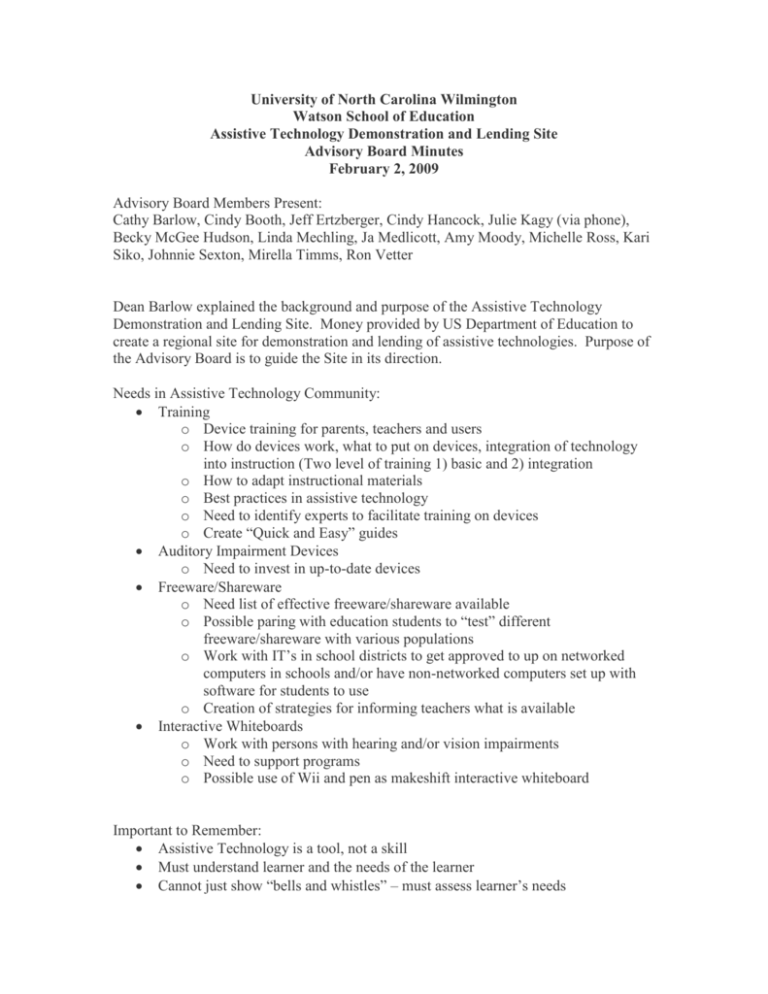
University of North Carolina Wilmington Watson School of Education Assistive Technology Demonstration and Lending Site Advisory Board Minutes February 2, 2009 Advisory Board Members Present: Cathy Barlow, Cindy Booth, Jeff Ertzberger, Cindy Hancock, Julie Kagy (via phone), Becky McGee Hudson, Linda Mechling, Ja Medlicott, Amy Moody, Michelle Ross, Kari Siko, Johnnie Sexton, Mirella Timms, Ron Vetter Dean Barlow explained the background and purpose of the Assistive Technology Demonstration and Lending Site. Money provided by US Department of Education to create a regional site for demonstration and lending of assistive technologies. Purpose of the Advisory Board is to guide the Site in its direction. Needs in Assistive Technology Community: Training o Device training for parents, teachers and users o How do devices work, what to put on devices, integration of technology into instruction (Two level of training 1) basic and 2) integration o How to adapt instructional materials o Best practices in assistive technology o Need to identify experts to facilitate training on devices o Create “Quick and Easy” guides Auditory Impairment Devices o Need to invest in up-to-date devices Freeware/Shareware o Need list of effective freeware/shareware available o Possible paring with education students to “test” different freeware/shareware with various populations o Work with IT’s in school districts to get approved to up on networked computers in schools and/or have non-networked computers set up with software for students to use o Creation of strategies for informing teachers what is available Interactive Whiteboards o Work with persons with hearing and/or vision impairments o Need to support programs o Possible use of Wii and pen as makeshift interactive whiteboard Important to Remember: Assistive Technology is a tool, not a skill Must understand learner and the needs of the learner Cannot just show “bells and whistles” – must assess learner’s needs SETT Process IEP important – work with school liaisons Function of devices key – not just “cool” device Must train parents on functions of devices Mentors Mentoring key to Site Needed to help teachers from other counties Mentor teachers - experts on devices to help ‘teach’ others Education Students Have students to create “best practices” for various devices Do research on devices and keep data Train teachers/others to use devices Workshops to be offered Make and Take workshops for teachers Offer workshops across region What is exciting about Site? So much out there – need place to see it o Visual, auditory and independent living aids Work with non-educationally relevant issues (schools can only assist with educational issues – this is a place for extra support) UNCW students to go out into schools Non-fee based resources for educators “Neutral” site – share data with all organizations Collaboration Professional development – teachers, therapists, etc. Work with technology departments in counties and begin to form relationships with schools Positive impact on hearing challenges Who is missing from Advisory Board? Parents Physical Therapists/Occupational Therapists Psychologists Rural Communities EC Directors/School Administration Self-advocates Next Steps Create needs list and prioritize as group Work on future lending aspect o Terms and conditions for borrowing items o Process for lending and returning items o What happens when devices are broken, keeping warranties in mind o Technicians to assist in repair of items out of warranty Online Forum for interaction among Advisory Board Members Next Advisory Board Meeting: Monday, March 30, 2009 3:00 – 5:00pm 207 New Centre


